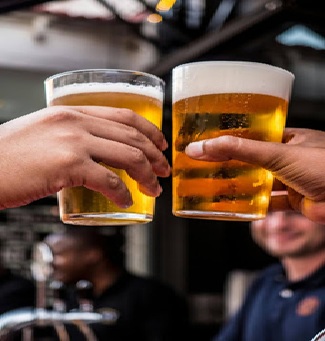Europe’s drinking habits tell a quiet story of geography, climate, and history. From the vineyards of the south to the breweries of the north, what people drink says much about where they come from and how they see themselves. Even in lighter pastimes like an online fishing game, competition and leisure often mirror the same divide—between regions shaped by warmth and vines, and those built around barley and hops. The split between beer and wine is more than taste; it’s a reflection of how Europe has evolved socially and economically.
Geography and Climate: The Roots of Preference
The first explanation for the divide is physical geography. Southern Europe, with its long summers and steady sunshine, is ideal for growing grapes. In contrast, the cooler and wetter climates of central and northern Europe favor grains. These environmental limits guided early agricultural choices. People drank what they could produce.
Wine-making thrived in Mediterranean countries where grapes ripened easily. Beer emerged farther north where vineyards struggled but barley grew well. Over centuries, these patterns became cultural habits. Even as trade expanded, local drinks remained tied to identity and daily life.
History and Religion in the Glass
Religion played an unexpected role in shaping what Europe drinks. In Catholic regions, wine gained symbolic and practical importance. It was used in religious rituals, and monasteries became centers of wine production. This gave wine a place of prestige and continuity, especially across southern Europe.
In contrast, Protestant regions of the north embraced beer more openly. Brewing was less tied to ceremony and more to daily consumption. The Reformation reduced the church’s influence on alcohol production, and secular breweries flourished. In this way, faith and reform indirectly reinforced existing geographic trends.
Economy and the Working Class
Drinking habits also reflect social and economic structure. In industrial regions, beer became the drink of labor. It was affordable, filling, and safer than water in cities with poor sanitation. Taverns and beer halls became places where workers met, relaxed, and shared community life.
Wine, on the other hand, carried different meanings. In rural and agricultural societies, it was tied to land ownership and family production. Southern Europe’s small vineyards often kept wine-making within families, linking it to heritage and pride. Even today, local wines remain part of everyday meals rather than luxury goods in many southern homes.
National Identity and Social Behavior
The contrast between beer and wine also mirrors different ideas of social interaction. In many northern countries, drinking is often associated with group activity—celebration, sport, or collective identity. Pubs, festivals, and communal drinking have long traditions.
In the south, drinking tends to be quieter, slower, and integrated into meals. Wine is often consumed alongside food, not as a separate event. The focus is on conversation and family rather than festivity alone. These patterns influence how different societies view moderation, hospitality, and even gender roles around drinking.
Over time, these customs became part of national image. A beer stein or a wine glass can serve as a cultural symbol as much as a drink. When Europeans describe their traditions, they often speak through these everyday rituals.
Urbanization and the Changing Map of Taste
Modern Europe blurs these old boundaries. Urban centers have become crossroads of culture, where beer, wine, and spirits mix freely. In recent years, younger generations across the continent have shown less loyalty to traditional drinks. Wine bars appear in northern capitals, and craft breweries flourish in southern towns.
Still, deep habits remain. Climate continues to affect production, and with it, local economies. Wine exports dominate in the south, while beer remains an industrial strength in the north. Tourism, too, plays a part—visitors often seek the drink most associated with a place, reinforcing the link between geography and identity.
Health, Policy, and the Modern Divide
Public health campaigns and regulations have added another layer to Europe’s drinking map. Some governments promote moderation differently depending on the national drink. For example, policies in wine-producing regions often focus on responsible pairing with food, while northern campaigns tend to address binge drinking and alcohol-free alternatives.
This variation reveals how policy reflects culture. Governments rarely fight against tradition directly. Instead, they adapt strategies to fit existing habits, showing how cultural heritage still shapes modern behavior.
The Cultural Meaning of Choice
Choosing between beer and wine in Europe is more than preference—it’s participation in a long historical story. Each sip carries the weight of geography, religion, labor, and identity. People inherit not only the taste of a drink but the worldview around it.
Yet as mobility and digital life grow, these traditions mix more easily. A northern worker may now enjoy wine at dinner, and a southern student may learn brewing as a craft. The old borders soften, but they do not disappear. Culture evolves slowly, often through everyday rituals like what people pour into a glass.
Conclusion
The divide between beer and wine across Europe is not just about climate or cost. It reflects centuries of adaptation—how people lived, worked, and built community. Beer grew out of grain and labor; wine from sun and land. Together, they form two sides of a shared cultural landscape that continues to define Europe’s diversity.
Even as lifestyles change, these drinks remain more than commodities. They are markers of belonging, carrying the memory of fields, climates, and choices made long before modern borders existed. The real story is not which drink dominates, but how both continue to shape Europe’s sense of self.

